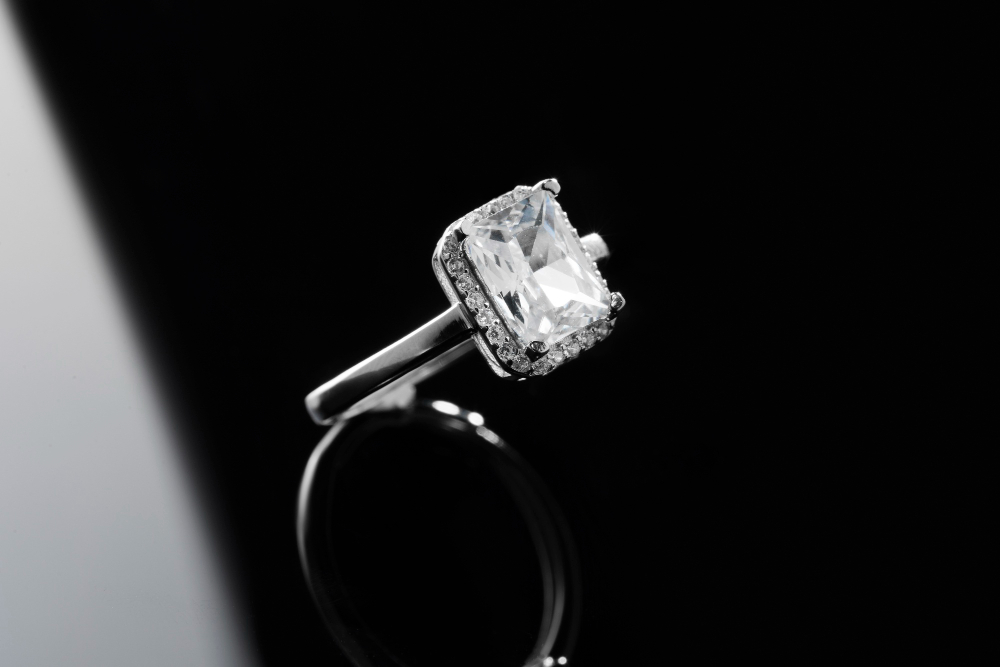When it comes to selecting the right karat gold for everyday jewelry, it’s essential to strike a balance between beauty, durability, and affordability. The karat value of gold indicates the purity of the metal, with 24K being pure gold. However, pure gold is often too soft for everyday wear, making it prone to scratches and dents. This is where gold alloys come into play, with 14K gold being a popular choice for various jewelry, including engagement rings and wedding bands.
In this comprehensive guide, we will delve into the world of karat gold, examining the characteristics, advantages, and disadvantages of 14K gold, and exploring alternative karat values to help you make an informed decision on the best karat gold for your everyday jewelry needs.

Understanding Karat Gold: A Quick Overview
Karat, often represented as “K” or “KT,” is a measure of gold purity. It indicates the proportion of pure gold in a given piece of jewelry. Pure gold is 24K, meaning it is 99.9% gold, while the remaining fraction consists of trace amounts of other metals. The following is a brief overview of some common karat values:
- 24K Gold (99.9% Gold): This is pure gold, and it is exceptionally soft and malleable, making it unsuitable for everyday wear.
- 22K Gold (91.6% Gold): Slightly less pure than 24K, 22K gold is still quite soft, although it is used in some jewelry pieces like necklaces and bracelets.
- 18K Gold (75% Gold): A good balance between purity and durability, 18K gold is often used in high-end jewelry.
- 14K Gold (58.3% Gold): The focus of this article, 14K gold is a popular choice for everyday jewelry, known for its balance of durability and affordability.
Why 14K Gold is Ideal for Everyday Use
14K gold is a popular choice for everyday jewelry for several reasons. Let’s explore its characteristics and advantages in more detail:
- Durability: One of the primary reasons for the popularity of 14K gold is its durability. Due to its lower gold content (58.3% gold and 41.7% alloyed metals), it is more resistant to wear and tear compared to higher karat gold. This means it can withstand the rigors of daily life, including exposure to various environmental factors and physical activities.
- Affordability: While 14K gold contains a significant amount of pure gold, it also contains alloyed metals, which are less expensive. This makes 14K gold more affordable than higher karat values like 18K or 22K, making it an attractive option for those on a budget.
- Color Options: 14K gold is available in various colors, including yellow, white, and rose gold. This versatility allows you to choose a color that best complements your skin tone and personal style.
- Ideal for Gemstones: 14K gold provides a secure and durable setting for gemstones, making it a popular choice for engagement rings and wedding bands. It offers both beauty and longevity, ensuring your precious stones are well-protected.
- Hypoallergenic Properties: The alloyed metals used in 14K gold are typically chosen to be hypoallergenic. This means that it is less likely to cause skin irritations or allergies, making it suitable for sensitive skin.
- Easy Maintenance: 14K gold is relatively easy to maintain. Regular cleaning and occasional polishing are usually all that’s needed to keep it looking its best. Its resistance to tarnishing and discoloration is another advantage for everyday wear.
- Widely Available: 14K gold is readily available from jewelers and in a wide range of jewelry styles, making it easy to find the perfect piece for your needs.
Challenges of 14K Gold
While 14K gold offers numerous advantages for everyday wear, it’s important to be aware of its limitations and potential downsides:
- Lower Gold Content: Compared to higher karat values, 14K gold contains less pure gold. Some individuals prefer the deeper yellow color and higher gold content of 18K or 22K gold for their jewelry pieces.
- Allergic Reactions: Although 14K gold is typically hypoallergenic, some people may still experience skin irritations or allergic reactions to the alloyed metals used. It’s essential to ensure that the alloy composition is suitable for your skin type.
- Scratching and Dents: While 14K gold is more durable than higher karat values, it is not entirely immune to scratches and dents. Over time, everyday wear can still result in minor surface imperfections.
- Repairs and Alterations: Due to the alloyed metals in 14K gold, resizing or repairing jewelry made from this alloy can be more challenging compared to higher karat gold.
- Color Preferences: Some individuals may have a preference for the distinct colors of higher karat gold, and the choices within the 14K range are relatively limited in comparison.
Exploring Alternative Karat Values for Everyday Jewelry
While 14K gold is an excellent choice for many, it’s essential to consider alternative karat values when making your decision. Here are some options to explore:
- 18K Gold (75% Gold): Offering a higher gold content and a more vibrant color, 18K gold is a popular choice for those who desire a balance between purity and durability. It is particularly well-suited for special occasion jewelry.
- 22K Gold (91.6% Gold): Although softer than 14K, 22K gold is used for intricate designs and traditional jewelry. It has a deep, rich color that some individuals find appealing.
- 10K Gold (41.7% Gold): For those looking for a more budget-friendly option, 10K gold is available. It has a lower gold content and is more durable but may have a paler color.
- Platinum: If you’re willing to explore beyond gold, platinum is an excellent choice for everyday jewelry. It is highly durable, hypoallergenic, and naturally white, making it suitable for a wide range of designs.
- Sterling Silver: For a more budget-conscious option, sterling silver is an excellent choice. It is affordable and versatile, but it may require more frequent cleaning and maintenance.
- Palladium: Palladium is a noble metal that shares many characteristics with platinum. It is lightweight, durable, and hypoallergenic, making it an alternative to both gold and platinum.
Considerations for Specific Types of Jewelry
The choice of karat gold for everyday jewelry can vary depending on the type of piece you’re considering. Here are some specific considerations for different types of jewelry:
- Engagement Rings: 14K gold is an excellent choice for engagement rings due to its durability and versatility. It provides a secure setting for gemstones and allows for intricate designs while withstanding daily wear.
- Wedding Bands: 14K gold is the most popular choice for wedding bands. It offers the ideal balance of strength and beauty, symbolizing the enduring love of a marriage.
- Necklaces and Bracelets: For necklaces and bracelets, you can opt for 14K or 18K gold, depending on your preferences. 18K gold may be chosen for its richer color, while 14K gold offers excellent durability.
- Earrings: Earrings, being less exposed to wear and tear, can be made from various karat values. You may choose 14K or even 18K gold for its luxurious appearance.
Selecting the Right Color
In addition to choosing the right karat value, the color of your gold jewelry plays a significant role in its overall appearance. Here are the most common gold colors:
- Yellow Gold: This is the traditional and classic gold color that most people are familiar with. It exudes warmth and complements a wide range of skin tones.
- White Gold: White gold is created by alloying gold with white metals like palladium and silver. It has a silvery-white appearance and is an excellent choice for modern and contemporary designs.
- Rose Gold: Rose gold, also known as pink gold, is created by adding copper to the gold alloy. It has a warm, rosy hue that adds a romantic and vintage touch to jewelry.
- Green Gold: Green gold is a rarer choice and is achieved by alloying gold with silver and cadmium. It has a greenish hue and is often used for unique and artistic jewelry.
- Black Gold: Black gold is a striking and contemporary option created by applying a black rhodium plating to white gold. It provides a unique and edgy appearance.
The choice of gold color is a matter of personal preference. Consider your skin tone, style, and the overall look you wish to achieve when selecting the right color for your everyday jewelry.
Caring for Your Everyday Gold Jewelry
Regardless of the karat value you choose, proper care is essential to ensure the longevity and luster of your everyday gold jewelry. Here are some care tips:
- Regular Cleaning: Clean your gold jewelry regularly with a soft brush and mild soapy water to remove dirt and oils. Rinse and pat dry with a soft cloth.
- Avoid Harsh Chemicals: Keep your jewelry away from chemicals like chlorine, which can damage the metal and affect its appearance.
- Safe Storage: Store your gold jewelry in a cool, dry place, away from direct sunlight and extreme temperatures. Use jewelry pouches or boxes to prevent scratches and tangles.
- Professional Inspection: Periodically have your jewelry inspected by a professional jeweler to check for loose stones or signs of wear.
- Avoid Impact: Be mindful of your jewelry during physical activities to prevent damage. Remove rings when doing heavy work or exercise.
- Polishing: If your gold jewelry starts to lose its shine, consider having it professionally polished to restore its luster.
Conclusion
Selecting the best karat gold for everyday use is a decision that involves a balance of personal preferences, lifestyle, and budget. While 14K gold stands out as a popular choice due to its durability, affordability, and versatility, it’s essential to consider your individual needs and style when making a decision. Whether you opt for 14K gold, a different karat value, or even a different metal altogether, the key is to choose a piece that reflects your taste and withstands the test of time.
In the world of jewelry, there is no one-size-fits-all answer, and the best choice is ultimately the one that speaks to your heart and suits your everyday life. So, go ahead, explore the options, and make an informed decision to ensure that your everyday jewelry enhances your beauty, style, and sentiment every day.





